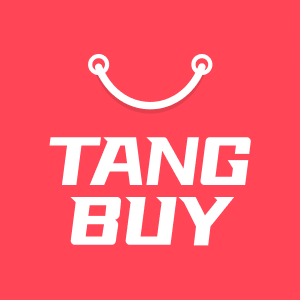How to Get Traffic to Your eCommerce Store: 7 Low-Cost Marketing Strategies for Dropshipping
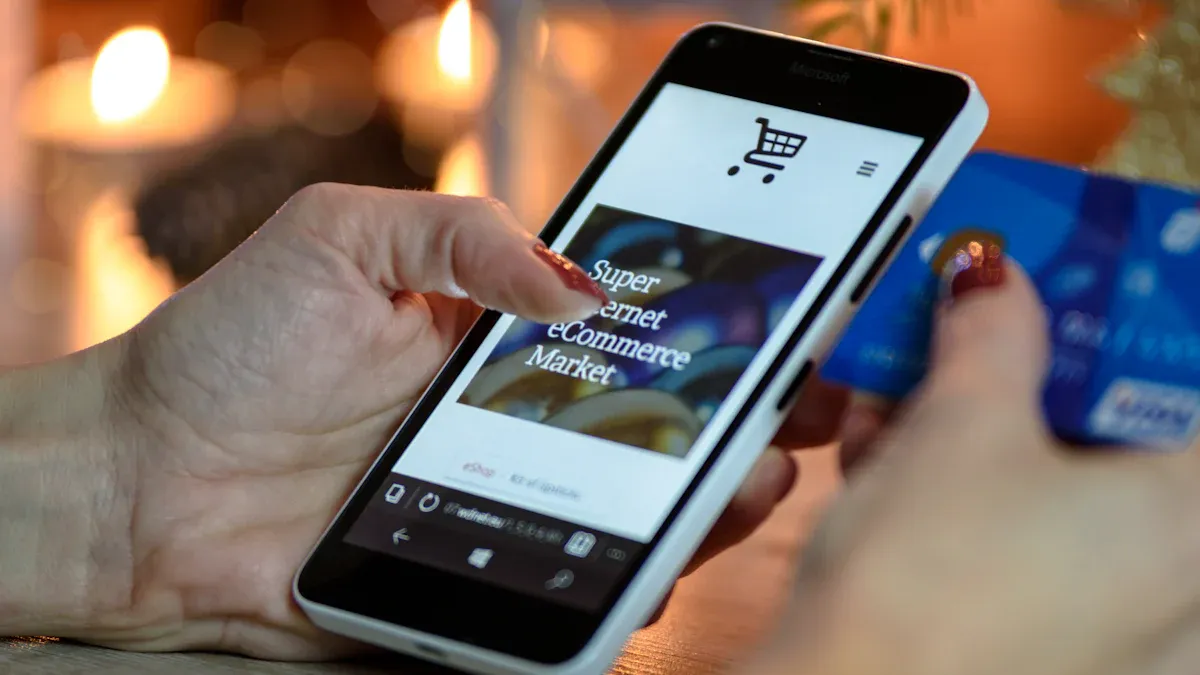
You want to get traffic to your dropshipping store without spending a fortune. Good news—you have plenty of proven, affordable options. Many dropshipping businesses start with a small budget. You can still see real results if you use smart, practical marketing. Focus on what works and stay consistent. You do not need fancy tools or a huge ad spend. Just take action and watch your store grow.
Key Takeaways
Use cheap marketing ways like content marketing, social media, SEO, email, influencer outreach, customer reviews, and retargeting. These help your dropshipping store grow without spending too much money.
Write helpful blog posts and share good content often. This brings visitors and helps people trust you by giving useful facts and using clear SEO steps.
Be active on social media like Facebook, Instagram, YouTube, and TikTok. This helps you find new customers and make a loyal group by talking with them in a friendly way.
Make your store easier to find by fixing product titles, meta tags, and website speed. This helps your store show up higher in search engines and work better on phones.
Grow your email list with pop-ups, social media, and rewards. Then send special, helpful emails to keep customers interested and get them to buy again.
Work with micro-influencers who have active followers to show your products in a real and cheap way. Check how well it works by using discount codes or special links.
Get and show real customer reviews and content made by users. This helps people trust you, makes more sales, and helps your store show up better in searches.
Use retargeting ads on Facebook and Google to remind people about your products. This helps more people buy and uses your store’s visitors better.

Why Low-Cost Marketing

Dropshipping Challenges
Dropshipping can be tricky. It is not always simple. Many people start dropshipping because it is easy to begin. This means there are lots of other shops. You have to work hard to be different. Most dropshipping stores sell the same things. You need to make your shop stand out. Profit margins are often small. Most dropshipping shops make between 15% and 20% profit. If you are new, you might only get 10%. These numbers are lower than traditional eCommerce. Some traditional shops can get up to 80% gross profit.
Business Model / Platform | Average Profit Margin Range | Notes |
|---|---|---|
Dropshipping (General) | 15% - 30% | Beginners often see 10-20%; experienced sellers can reach up to 30%. |
Shopify Dropshipping | 20% - 30% | Higher margins due to lower fees and control over branding. |
Amazon Dropshipping | Around 20% | Competitive marketplace with margins from 10% (beginners) to 30% (experienced). |
Traditional eCommerce (Gross) | 40% - 80% | Varies by product category; luxury and digital products often exceed 50%. |
Traditional eCommerce (Net) | 10% - 20% | After accounting for all expenses including marketing, staff, and overhead. |
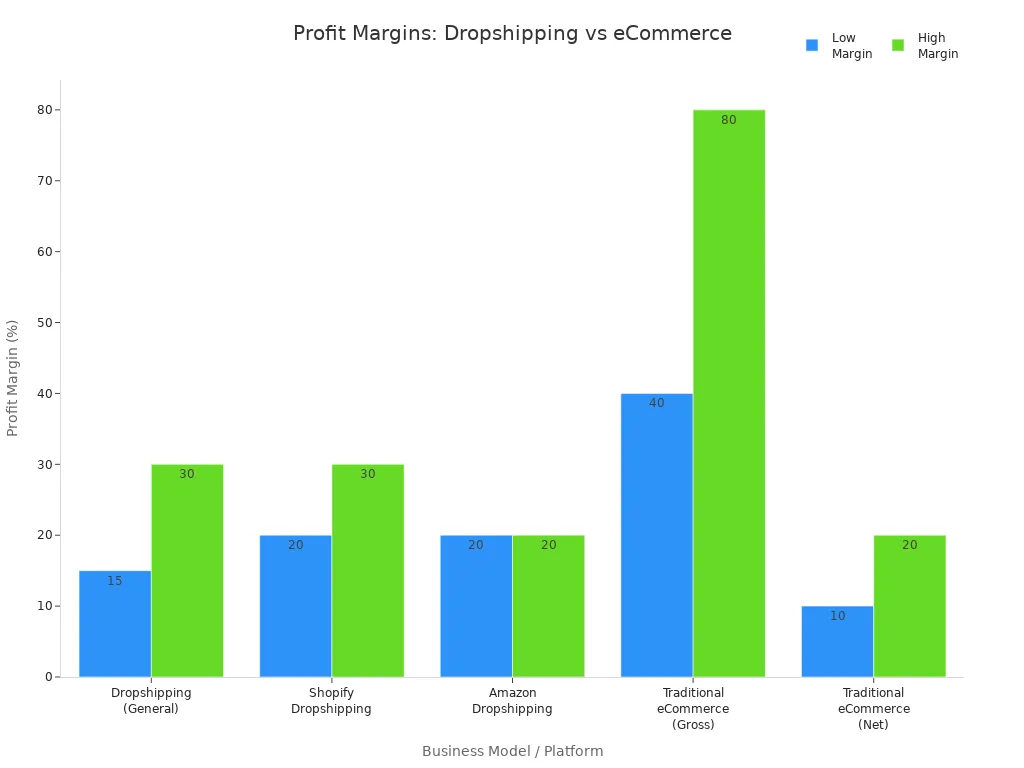
You also need to get people to visit your shop. You cannot spend too much on marketing. If you do, you might lose money. Here are some problems you might face when trying to get more visitors:
It is hard to be noticed when many shops sell the same things.
You need to make your brand and products look special.
You should use SEO to show up higher in search results.
You must talk to customers on social media like Facebook, Instagram, and TikTok.
You need to build trust and loyalty with organic marketing, influencer help, and email messages.
Tip: Show what makes your shop special. Even small changes in your product words or pictures can help you get noticed.
Benefits of Budget Strategies

You do not need lots of money to make your dropshipping shop work. Using low-cost marketing can help your shop grow slowly and safely. Cheap marketing keeps your profits safe and stops you from spending too much.
Get loyal customers with email messages and personal notes.
Make your shop easier to find with content marketing and SEO. Blog posts, videos, and infographics can bring in people who want your products.
Use paid ads carefully. Small ads on Google or social media can reach the right people and save money.
Bring back visitors who did not buy the first time with retargeting ads.
Work with influencers and affiliates to find new customers without paying a lot at first.
Make better choices by checking your results and changing your plans.
These ideas do more than just save money. They help you build a brand people remember. Over time, you will get more repeat buyers, better sales, and a stronger online shop. Smart, cheap marketing helps your dropshipping shop grow and do well for a long time.
Content Marketing
Content marketing is one of the best ways to get traffic to your dropshipping store without breaking the bank. You can build trust, show your expertise, and attract people who want what you sell. Let’s break down how you can use blogging and value content to grow your shop.
Blogging to Get Traffic
Blogging helps you get traffic by sharing useful information and answering questions your customers have. You do not need to post every day, but you should stick to a regular schedule. Posting once or twice a week works well for most new shops. This keeps your blog fresh and gives people a reason to come back.
Topic Ideas
You might wonder what to write about. Here are some ideas to get you started:
Listicles, like “Top 10 Must-Have Gadgets for Your Home”
How-to guides and tutorials for your products
Buying guides that help people choose the right item
Product comparisons and reviews
Answers to common questions in your niche
These topics help you connect with your audience and solve their problems. When you answer real questions, you build trust and encourage visitors to return.
SEO Basics
SEO, or search engine optimisation, helps your blog posts show up in Google searches. Use simple keywords in your titles and headings. Write clear, helpful content that matches what people are searching for. Add links to your products and other blog posts. Over time, this will help you get traffic from people looking for answers online.
Tip: Consistency matters more than quantity. Stick to your schedule and focus on quality posts.
Value Content

You can get traffic by offering value in different ways. People love content that helps them or teaches them something new.
Product Guides
Product guides are a great way to show how your items work. You can write step-by-step instructions, share tips, or create videos. These guides help customers feel confident about buying from you. They also answer questions before someone even asks.
Repurposing
Don’t let your hard work go to waste. Repurpose your blog posts into videos, infographics, or social media posts. For example, turn a buying guide into a short TikTok video or a helpful infographic for Instagram. This lets you reach more people without creating new content from scratch.
Here’s a quick look at how content marketing compares to paid ads:
Marketing Channel | Average Cost per Acquisition (CAC) Range | Notes on Investment and Performance |
|---|---|---|
Content Marketing & SEO | $15 - $35 | Lower long-term cost, brings in high-quality customers |
Meta Ads (Facebook/Instagram) | $45 - $75 | Higher cost, scalable, moderate customer quality |
Google Search | $35 - $65 | Higher cost, strong customer quality |
Content marketing gives you a lower cost per customer and helps you build a brand that lasts. When you share value, people remember your shop and come back for more.
Social Media
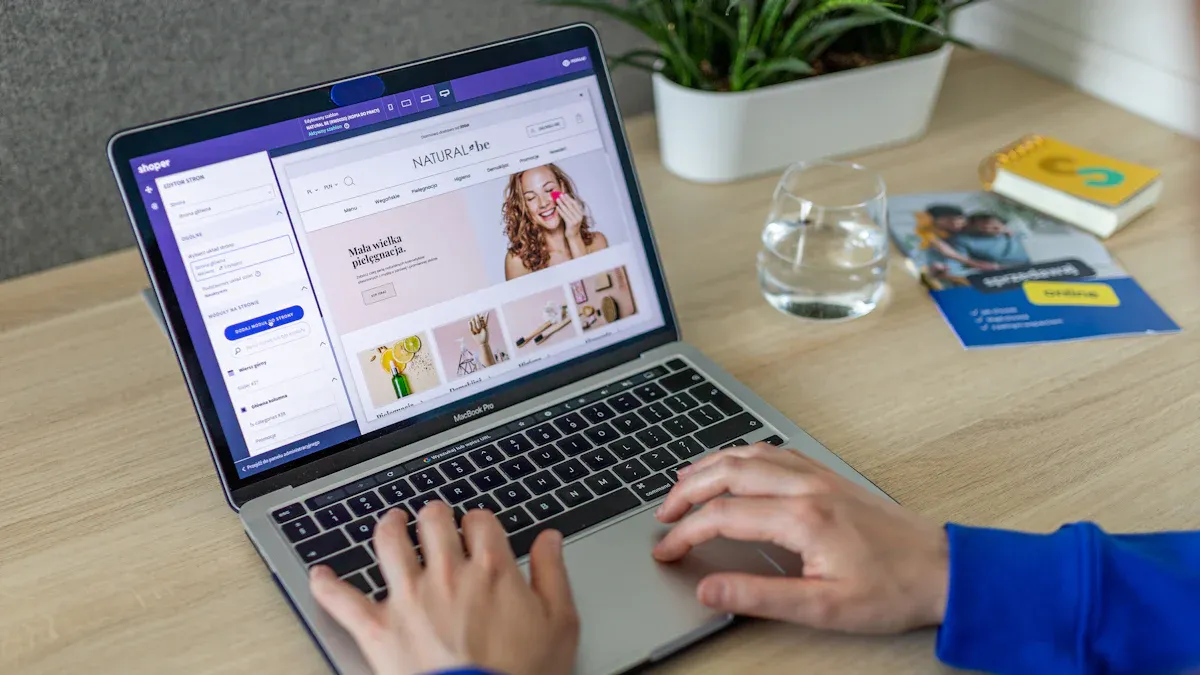
Social media is a powerful way to get traffic to your dropshipping store. You can reach new customers, build a loyal community, and show off your products in creative ways. Let’s look at the best platforms and how you can use them to grow your shop.
Platforms for Traffic
Facebook & Instagram
Facebook leads the way for eCommerce referral traffic. Most people discover new products here, thanks to its huge user base. You can share posts, run targeted ads, and join groups where your ideal customers hang out. Instagram is perfect for visual shopping. It offers features like Instagram Shopping and Checkout, making it easy for people to buy what they see. Many users shop weekly on Instagram, so posting eye-catching photos and stories can help you stand out.
Facebook: Great for sharing updates, running ads, and joining groups.
Instagram: Best for product photos, stories, and shoppable posts.
Tip: Use both platforms together. Share your best photos on Instagram and link them to your Facebook page for more reach.
YouTube & TikTok
YouTube and TikTok are fantastic for video content. YouTube works well for product demos, how-to videos, and unboxing clips. People love to see products in action before they buy. TikTok is all about short, fun videos. You can show quick tips, behind-the-scenes moments, or even customer reactions. Both platforms help you reach younger audiences and make your brand feel more personal.
YouTube: Post longer videos like tutorials and reviews.
TikTok: Share short, creative clips to catch attention fast.
Community Building

Engagement Tips
Building a community means more than just posting. You need to talk with your followers. Like their comments, answer questions, and join conversations. People trust brands that feel friendly and real. Share user-generated content, such as customer photos or reviews. Run competitions with small prizes to get people involved. Use hashtags to help new people find your posts, but keep them relevant.
Free Tools
You do not need expensive tools to manage your social media. Free options like Hootsuite and Google Alerts help you schedule posts and track mentions. BuzzSumo lets you see what topics are trending. These tools save time and help you stay organised.
Promotions
Promotions on social media can boost your traffic and sales. Work with micro-influencers who match your brand. They often have loyal followers and can share honest reviews. Influencer marketing builds trust and creates social proof. You can also run small ad campaigns to target people who are likely to buy. Try different ads and see what works best. Always link your social profiles to your store so people can shop easily.
Note: Consistent posting and friendly engagement help you get traffic and build a brand people remember.
SEO for eCommerce
You want more people to find your shop when they search online. SEO, or search engine optimisation, helps you do just that. Around 40% of all eCommerce traffic comes from organic search. In some niches, this number goes up to 45%. Search engines are the top way people discover online shops. If you combine organic and paid search, search engines drive about 68% of all trackable eCommerce visits. So, getting your SEO right can make a huge difference.
On-Page SEO
On-page SEO means making changes to your own website. You control these steps. They help search engines understand your shop and show it to the right people.
Product Titles
Your product titles matter a lot. Use clear, keyword-rich titles that match what shoppers type into Google. Avoid copying manufacturer names. Instead, write your own titles that describe the product and its main features. For example, instead of “Wireless Earbuds,” try “Bluetooth Wireless Earbuds with Noise Cancelling – 20hr Battery.” This helps your products stand out and appear in more searches.
Meta Tags
Meta tags are short bits of text that tell search engines what your page is about. Write a unique meta title and description for each product. Keep them short, clear, and include your main keywords. Good meta tags can boost your click-through rate from search results.
Tip: Make sure your shop loads quickly and looks good on mobile. Google likes fast, mobile-friendly sites.
Here are the most important on-page SEO factors for your shop:
Content optimisation with original, keyword-rich descriptions
Mobile-friendly design and fast page speed
Clean, descriptive URLs and schema markup
Internal links and easy navigation
Off-Page SEO

Off-page SEO happens outside your website. It shows search engines that others trust your shop.
Backlinks
Backlinks are links from other websites to yours. Think of them as votes of confidence. High-quality backlinks from trusted sites help your shop rank higher. You can get these by working with bloggers or influencers in your niche. Quality matters more than quantity. One good link is better than ten bad ones.
Links from relevant, high-authority sites boost your rankings.
Avoid spammy or paid links that are not tagged properly.
Forums
Forums are great places to share your expertise and build backlinks. Join forums related to your niche. Answer questions and share helpful tips. Add your shop link in your profile or signature if allowed. This can bring in both traffic and trust.
Free SEO Tools
You do not need to spend money to improve your SEO. Many free tools can help you spot problems and find new ideas.
Google Search Console – Tracks your site’s performance and finds SEO issues.
Screaming Frog SEO Spider – Audits your site for broken links and technical errors.
Ahrefs Free SEO Toolkit – Offers keyword research and site audit features.
Google Keyword Planner – Suggests keywords for your products.
AnswerThePublic – Shows what questions people ask about your niche.
Squoosh – Compresses images to speed up your site.
Google Analytics – Helps you understand your visitors and what they do.
Try out a few of these tools. They make SEO easier and help your shop get found by more people.
Email Marketing
Email marketing is a great way to make money in eCommerce. If you spend £1, you might get back about £40. That means you can earn a lot more than you spend. Some shops earn even more, especially if they send emails often or have loyal subscribers.
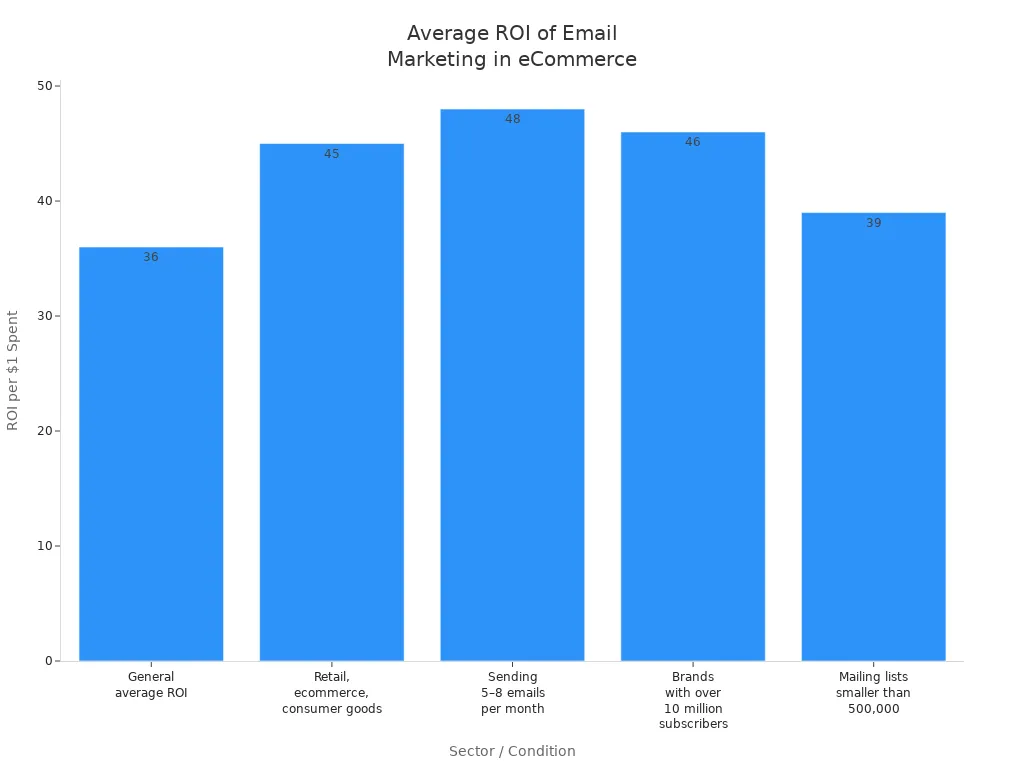
Build a List
You need a good email list to do well with email marketing. Start collecting emails as soon as you open your shop. A bigger list means you can tell more people about your offers.
Pop-Ups
Pop-ups help you get more email addresses. Put them on your most visited pages. Use pop-ups that show up after a few seconds or when someone tries to leave. Offer something nice, like a discount or free guide, for their email. Make sure your pop-up is easy to understand. People will sign up if they know what they get.
Social Collection
Social media can help you grow your list faster. Run contests or giveaways that need an email to join. Work with influencers who can share your signup form. You can also use ads to send people to a signup page. Make your forms simple and show why joining is good.
Tip: Put a signup form in your website footer. This lets visitors join your list any time they want.
Campaigns
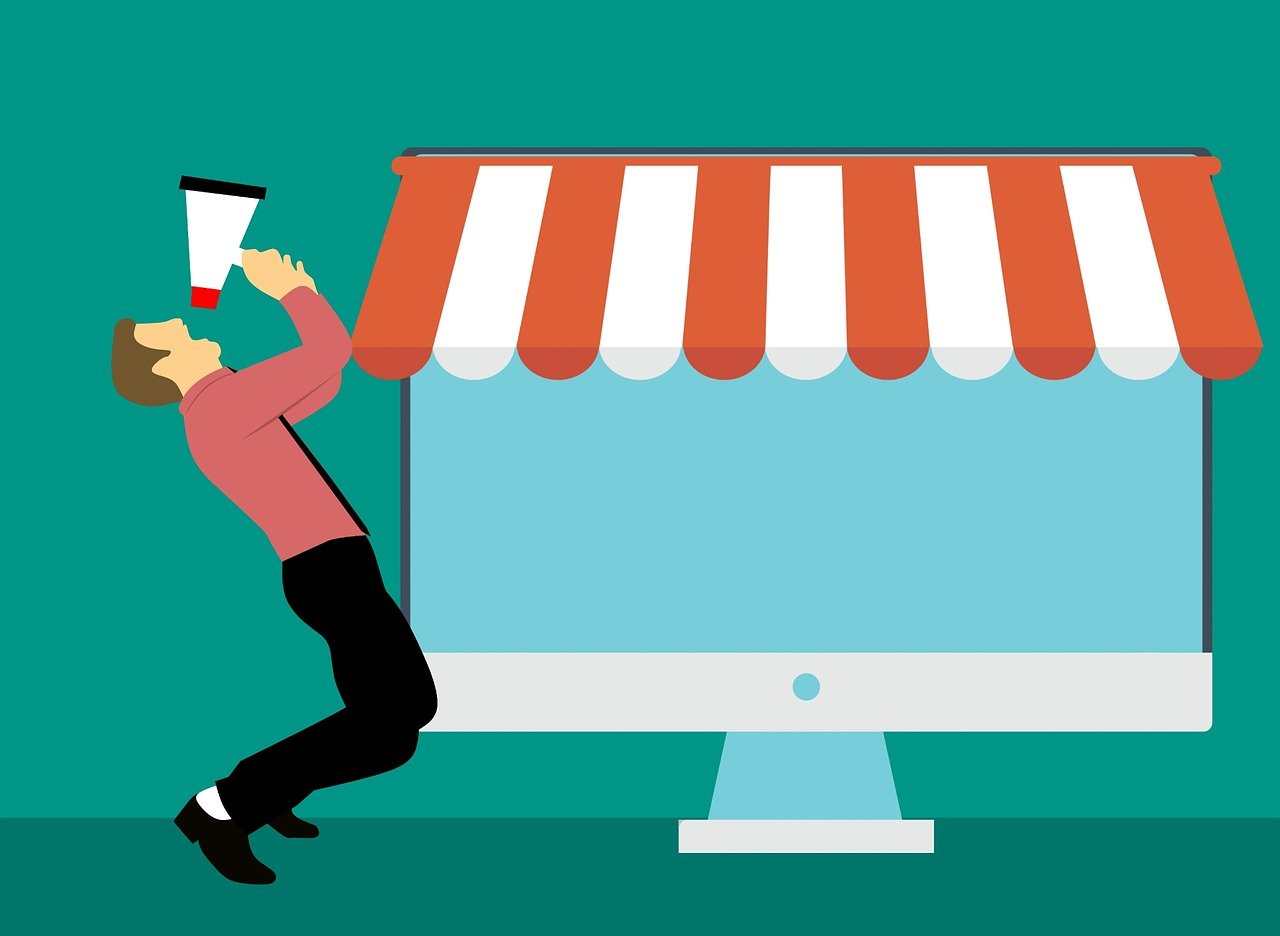
When you have a list, you can start sending emails. Good emails keep people interested and bring them back to your shop.
Newsletters
Newsletters help you stay in touch with your customers. Share news, new products, and tips. Sending newsletters often helps people remember your brand. Many shops find that newsletters turn readers into buyers.
Personalisation
Personalised emails work better. Use the customer’s name and suggest products they might like. Automated emails, like welcome messages or reminders, get opened the most. You can also send special deals to loyal customers or people who have not shopped in a while.
Campaign Type | Open Rate (%) | Click Rate (%) | Key Insight / Case Study |
|---|---|---|---|
64.03 | 21.32 | Highest engagement; triggered by actions. | |
Purchased Specific Product | 76.58 | 28.43 | Highly targeted; thanks or upsell emails. |
Abandoned Cart Emails | 53.00 | 8.00 | Remind customers to complete their purchase. |
Newsletters | 40.83 | 5.28 | Regular updates keep your brand in mind. |
Low-Cost Tools
You do not need to spend much to start email marketing. Many tools are free or cheap and work well for dropshipping shops.
Tool Name | Key Features & Suitability for Dropshipping Businesses |
|---|---|
Mailchimp | Easy for beginners, pre-designed templates, basic automation, audience segmentation. |
Klaviyo | Strong segmentation, integrates with Shopify, supports abandoned cart reminders. |
MailerLite | Simple platform, drag-and-drop editor, A/B testing, good deliverability. |
OptinMonster | High-converting pop-ups, exit-intent technology, advanced targeting. |
Sumo | All-in-one list building, pop-ups, welcome mats, analytics. |
Privy | Ecommerce-focused lead capture, integrates with cart recovery, discount offers. |
You can start with a free plan and pay more as your list grows. These tools help you make, send, and check your emails easily. Try a few and see which one you like best.
Remember: Email marketing works best when you give value and make it personal. Keep your emails helpful, friendly, and useful. Your subscribers will want to read your messages.
Influencer Outreach
Influencer outreach is a smart way to get more eyes on your dropshipping shop without spending a fortune. You do not need to chase celebrities. Micro-influencers can give you better results for less money. Let’s see how you can work with them and make your budget go further.
Micro-Influencers
Micro-influencers have smaller but highly engaged audiences. They often feel more like friends to their followers. People trust their opinions and listen to their advice. You can reach the right people and build trust quickly.
Finding Partners
Start by looking for micro-influencers in your niche. Aim for those with 1,000 to 100,000 followers. You can use free tools like HypeAuditor or search hashtags on Instagram to spot good matches. Focus on influencers who share your brand values and style. Do not worry about huge follower numbers. Engagement matters more.
Here’s a quick comparison to help you see the difference:
Aspect | Micro-Influencers | Traditional Influencers (Macro) |
|---|---|---|
Average Cost per Post | Much higher | |
Follower Range | 1,000 to 100,000 | Hundreds of thousands to millions |
Engagement Rate | Up to 8% | 1-2% |
Reach | Smaller but highly engaged | Larger but less engaged |
Key Benefits | Cost-effective, authentic, niche-targeted | Broad reach, lower engagement |
Tip: Micro-influencers can give you up to 20% higher conversion rates and 60% more trust than bigger names.
Negotiation
When you reach out, keep your message personal. Show that you know their content and explain why you think you’re a good fit. Be honest about your budget. Many micro-influencers are open to creative deals. You can offer free products, affiliate links, or even a small payment. Always agree on what you expect—like how many posts, stories, or videos they will share.
Affordable Collabs
You do not need a big budget to work with influencers. There are many ways to create win-win deals.
Product Gifting
Product gifting is a popular choice. You send your product for free, and the influencer shares their honest thoughts. This works well with micro-influencers who love trying new things. You can also offer exclusive discounts or invite them to special events. Some brands use affiliate programmes, so influencers earn a small commission for every sale they help make.
Here are some top ways to collaborate on a budget:
Swap products or services instead of paying cash.
Work with nano-influencers (1,000–10,000 followers) for even higher engagement.
Cross-promote each other’s content to grow both audiences.
Offer unique experiences or branded gifts.
ROI Tracking
You want to know if your influencer campaigns work. Track results by giving influencers special discount codes or unique links. Watch for spikes in traffic or sales after a post goes live. Use free tools like Google Analytics to see where your visitors come from. If you use affiliate links, you can see exactly how many sales each influencer brings in.
Metric | Micro-Influencers | Macro-Influencers |
|---|---|---|
Follower Count | 1,000 to 100,000 | Millions |
Engagement Rate | Up to 8% | 1-2% |
Trust Level | 60% more trust to brand | Baseline |
Conversion Rate | 20% higher than macro-influencers | Baseline |
ROI | $5.78 earned per $1 spent | Lower ROI |
Cost per Post | Often less than $250 | Much higher |
Note: Building real relationships with influencers leads to better results. Treat them as partners, not just a way to advertise. This helps your brand grow and keeps your marketing affordable.
Customer Reviews
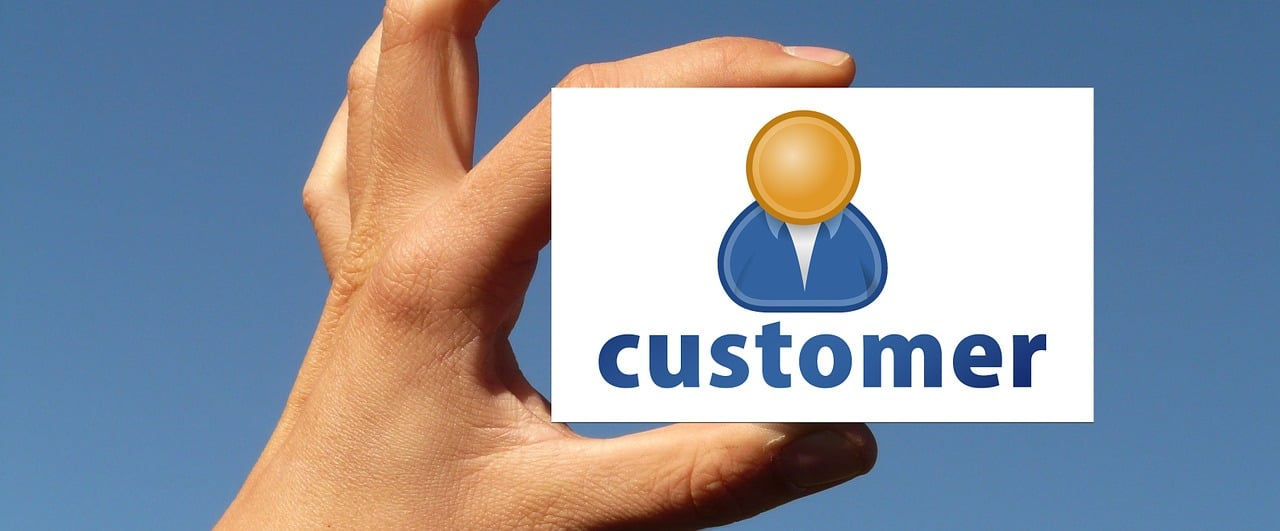
Customer reviews can really help your dropshipping shop. When people see real feedback, they trust your shop more. Reviews are social proof. They show others like your products and your brand.
Get Traffic with Social Proof
Reviews do more than build trust. They help you get more visitors and sales. A survey showed 49% of people trust reviews like a friend’s advice. If your products have reviews, people are 52.2% more likely to buy. Products with over 50 reviews can get a 4.6% higher conversion rate. Reviews also help your shop show up in search results. They add new words and fresh content.
Impact Aspect | Evidence Detail |
|---|---|
Increased likelihood to buy | Products with 1-10 reviews are 52.2% more likely to sell than those without. |
Conversion rate spike | Having 50+ reviews can cause a 4.6% increase in product conversion rate. |
Trust and credibility | Reviews build trust; customers rely on reviews three times more than ads. |
Repeat purchases | Positive reviews increase satisfaction and repeat buying. |
SEO benefits | Reviews add unique content, improving search rankings and visibility. |
Return rate reduction | Reviews set clear expectations, reducing returns. |
Requesting Reviews
You can get more reviews by asking your customers. Send a nice email after someone buys from you. Thank them for their order and ask for a review. Automated emails make this easy. Give a simple link or button to write a review. Most people will help if you ask kindly.
Incentives
Sometimes, people need a reason to leave a review. Offer a small reward, like a discount code or prize draw entry. This makes customers feel special and gives them a reason to share. Keep rewards simple and honest. Real reviews work best when they come from true experiences.
Tip: Reviews with scores between 4.0 and 4.7 look most real. Too many perfect scores can seem fake.
User Content

User-generated content is another way to build trust and get visitors. When customers share photos or stories, it shows real people like your products.
Photo Contests
Run a photo contest to get customers to share pictures. Make a fun hashtag and ask people to post photos on Instagram or Facebook. Offer a small prize for the best photo. This gives you great content and helps new people find your brand.
Ask customers to share photos and reviews for real social proof.
Use hashtags and contests to get more people to join in.
Always ask before sharing customer photos.
Featuring Customers
Show happy customers on your website and social media. Share their photos, stories, or reviews in a special spot. This makes customers feel important and gets others to join. Showing real people builds trust and a friendly community around your shop.
Note: Sharing user content on your website, emails, and social media can help you reach more people. When you show real stories, your brand feels more friendly and trustworthy.
Retargeting
Retargeting helps you bring back visitors who left your shop without buying. You remind them about your products with ads on Facebook, Google, and other sites. This strategy works because people often need to see something a few times before they decide to buy. If you want more sales from the traffic you already have, retargeting is a smart move.
Retargeting Basics
When someone visits your store but does not buy, you can show them ads later as they browse the web or scroll through social media. These ads keep your brand fresh in their mind. Retargeting ads get much better results than normal ads. You might see click-through rates that are ten times higher than standard display ads. Conversion rates can jump by up to 43% across different devices. Some shops even see their revenue go up by a third after starting retargeting campaigns.
Here’s why retargeting stands out:
You reach people who already know your shop.
Your ads feel more personal and relevant.
You spend less to get each sale compared to cold ads.
Retargeting can boost your brand’s web engagement by at least 16%.
Many eCommerce shops report a return on ad spend (ROAS) of over 10x, with some seeing up to 15x.
Tip: Retargeting works best when you segment your audience. Show different ads to people who viewed a product, added to cart, or almost checked out.
Low-Budget Ads
You do not need a big budget to start retargeting. Even £5 a day can make a difference if you set things up right. Focus on the platforms where your visitors spend the most time.
Facebook Pixel
Facebook Pixel is a free tool that tracks what visitors do on your site. You add a small code to your shop. This lets you show ads to people who visited, viewed products, or added items to their cart. You can create custom audiences and show them special offers or reminders.
Set up your Pixel in minutes on Shopify or WooCommerce.
Run retargeting ads for as little as £1–£5 per day.
Use dynamic ads to show the exact products people viewed.
Track results and adjust your ads for better performance.
Note: Facebook retargeting ads often have a 70% higher conversion rate than standard ads.
Google Ads
Google Ads lets you reach visitors as they browse millions of websites or watch YouTube. You can start with a small daily budget, sometimes as low as £5. Use Google’s Shopping campaigns to show your products to people who already visited your shop.
Upload high-quality product images and clear descriptions.
Let Google automate your targeting for the best results.
Run your campaign for at least two weeks to gather enough data.
Monitor your results and tweak your ads to improve sales.
You can also combine Google Ads with email retargeting. Send reminders to people who left items in their cart. This double approach helps you recover more sales without spending much.
Retargeting is one of the most efficient ways to grow your dropshipping shop. You get more value from every visitor and turn missed opportunities into real sales.
Combine Strategies
Simple Plan
You do not need to do everything at once. Start with a simple plan that mixes a few key strategies. When you combine content marketing, SEO, social media, and email marketing, you create a powerful effect. Each method supports the others. For example, your blog posts help your shop show up in Google searches. Social media shares bring more people to your site. Email marketing keeps customers coming back. When you use these together, you reach more people and build a stronger brand.
Many successful shops use this approach. They see steady growth because each strategy boosts the others. Content marketing with SEO brings in organic traffic and builds trust. Social media helps you find new customers where they spend time. Email marketing turns visitors into loyal buyers. If you keep things simple and stick to your plan, you will see results.
Tip: Focus on two or three strategies first. Add more as you get comfortable.
Track & Optimise
Tracking your results is just as important as starting your plan. You want to know what works and what does not. Use simple tools to watch your key numbers. These numbers are called KPIs, or key performance indicators. They show how well your shop is doing.
Here are some easy steps to track and improve your marketing:
Pick the right tools for your shop. You can use a spreadsheet or a free dashboard.
Watch important numbers like conversion rate, average order value, and where your traffic comes from.
Connect your website, social media, and ad accounts to see the full picture.
Look for patterns in your data. See which products or posts get the most attention.
Compare your results to other shops in your industry.
Use what you learn to make better choices. If something is not working, try a new idea.
Check your numbers often. Small changes can make a big difference over time.
Note: Tools like Google Analytics, Facebook Pixel, and Shopify Reports help you track your shop’s performance without spending extra money.
Use Plugins
Plugins and tools make your marketing much easier. You do not have to do everything by hand. Many plugins help you save time and get better results.
Plugin/Tool Name | What It Does | Free Plan? |
|---|---|---|
Klaviyo | Email marketing automation | Yes |
Rank Math | SEO optimisation for your shop | Yes |
WooCommerce Google Analytics Integration | Tracks shop performance and sales | Yes |
Tidio | Live chat to talk with customers | Yes |
TrustPulse | Shows real-time sales for social proof | Yes |
Discount Rules for WooCommerce | Manages discounts and special offers | Yes |
WooCommerce Cart Abandonment Recovery | Sends emails to recover lost sales | Yes |
These tools help you send emails, improve SEO, track sales, and talk to customers. You can start with free versions and upgrade as your shop grows. Using plugins means you spend less time on boring tasks and more time growing your business.
Remember: Consistency and patience matter most. Keep using your plan, check your results, and adjust as you go. Over time, your shop will get more traffic and sales.
You do not need lots of money to grow your dropshipping shop. These seven ideas—content marketing, social media, SEO, email, influencer outreach, customer reviews, and retargeting—work best when used together. Try starting with just one or two, then add more later. If you keep working and make smart changes, you will see real results.
Making your website faster and better on phones keeps shoppers happy.
Testing different things and having easy checkouts help you get more sales.
Personalised marketing and loyalty rewards make customers want to return.
Be patient and always try to learn new things. Are you ready to use these tips? Tell us your story or ask a question in the comments below!
FAQ
How long does it take to see results from these strategies?
You might notice some traffic in a few weeks. Most shops see bigger changes after two or three months. Keep going and stay patient. Consistency helps your shop grow.
Do I need to pay for any tools to start?
You can use free tools for most tasks. Many plugins and apps offer free plans. Upgrade only when your shop grows or you need more features.
What is the best social media platform for dropshipping?
It depends on your products and audience. Instagram works well for fashion and beauty. Facebook suits most niches. TikTok helps you reach younger shoppers. Try a few and see which one brings the most visitors.
Can I do all the marketing myself?
Yes, you can handle everything on your own at first. Use free guides and tutorials online. As your shop grows, you might want to hire help or use more advanced tools.
How do I get more customer reviews?
Ask your customers after they buy. Send a friendly email with a review link. Offer a small reward, like a discount or entry into a prize draw. People like to share their thoughts when you make it easy.
What if I have a very small budget?
Start with free methods like content marketing, SEO, and social media. Focus on building your brand and trust. Use paid ads only when you can afford them. Every little step helps your shop grow.
Do I need a blog for my dropshipping store?
A blog helps you get more visitors from search engines. You can share tips, guides, and product news. If you do not like writing, try short posts or videos. Even a simple blog can make a big difference.
Still have questions? Drop them in the comments below! 😊

TangBuy: A Smarter Way to Dropship in 2025
If you're looking to stay competitive with dropshipping in 2025, speed and trend-awareness are key. TangBuy helps you stay ahead with real-time product trends, fast fulfilment, and factory-direct sourcing. With over 1 million ready-to-ship items, 24-hour order processing, and seamless Shopify integration, TangBuy makes it easier to test, scale, and succeed in today's fast-moving eCommerce landscape.
See Also
Effective Ways To Attract More Buyers To Your Store
Essential Advice For Achieving eBay Dropshipping Success
Easy Methods To Earn Income Through eBay Dropshipping
